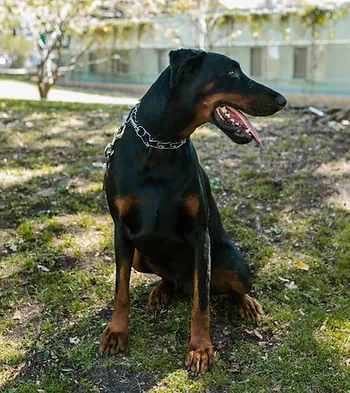Dog Training in a Cost of Living Crisis

The Dog Training industry has not evaded the financial crisis that the rest of the world is in; it has been hit hard in more ways than one. Not only are we seeing qualified training services become exceedingly unaffordable to a large population of people, but we are also seeing an increase in the use of aversive training methods on dogs, both as a direct and indirect result of the cost of living crisis. The rising cost of professional services are forcing people to look elsewhere for information. Most people have access to the internet and can easily find dog training videos online and on social media for free, where the advice being given out is often by people who are not qualified to do so. The rise in DIY dog training has created a huge increase in the use of aversive training equipment such as prong collars and e-collars, which have since become 'trendy' as they are seen all over TikTok and Instagram, platforms people turn to for free training advice. The increased interest in aversive training methods and trainers who cheaply offer them is unintentionally creating a generation of traumatised dogs and guardians at a time when there are endless other atrocities and unknowns for us to worry about.
And I completely understand why people are seeking out those services anyway.

Professional, qualified dog training services are expensive. This is because the dog training industry is unregulated, meaning anyone can call themselves a dog trainer or behaviourist despite having no qualifications or experience. What's wrong with this? Well, dog training is a science. It is something that needs to be studied and understood because it is living, sentient beings that our work has an impact on. We need to get it right. Due to the lack of regulation, getting a dog training qualification involves studying privately or going to university, and these courses are expensive to access. As a result, trainers like myself have to account for that cost in the prices we set for our clients. Not only do we have to ensure we make that money back, but we are also required to do CPD (continuing profressional development) hours every year to maintain our training qualification. All of this costs us money - more now than ever before. So the prices we charge reflect the investment of time and money that we have put into our education in order to provide the best service that we can for our clients.
The problems here are:
- The costs of these courses are stopping aspiring dog trainers from getting qualifications and they are instead taking a DIY approach in a scientific industry
- People who want to work with qualified dog trainers often cannot afford to do so

The PDSA Animal Wellbeing (PAW) Report 2023 found "86% of owners [said] that the cost of owning their pet has increased, and 33% said that owning a pet was more expensive than they expected". The cost of buying a dog and then meeting that dog's primary care needs, such as food, veterinary care, bedding and toys, is now so expensive that purchasing dog training services on top of all these other costs is unrealistic for many.
What can we do?
If you are a dog guardian looking to access a qualified trainer but are struggling with the cost of it, here are some ideas for you:
- Contact me - I offer a 'Pay What You Can Afford' scheme so that my services are available to everyone. This covers all dog training, not just cooperative care.
- Contact charities such as Dog's Trust, who offer reduced cost training as well as a free support line that you can call and get training advice from.
- Research what services are available in your Borough. The Borough of Camden has an incredible program called The Camden Dog Project which was founded by Susan Close of The Dog Hub. They offer free training classes and support to everyone in the borough of Camden.
- Find and learn from trainers online who are qualified and giving out safe, ethical advice. Get in touch with me to receive a list of all the online content creators I recommend.
If you are an aspiring dog trainer but you're worried about the level of investment involved or cannot afford that investment, here are some options for you to look into:
- The three main dog training qualfication providers offer payment plans to avoid a large upfront fee: PACT, KPA and VSA
- The three main dog training qualification providers offer scholarships to help with the cost of becoming qualified: PACT, KPA and VSA
- Contact local dog training businesses and ask if you can observe their classes and find out more about what they do and how they do it. To find a qualified trainer, you can look at the practioner directories for ABTC and APBC
- Find and learn from trainers online who are qualified and giving out safe, ethical advice. Get in touch with me to receive a list of all the online content creators that I recommend.
Whilst we don't know what is to come in terms of the cost of living crisis, I hope to see the dog training industry and the need for qualified trainers survive this challenging time. People will always have dogs. That means people need access to the right information. I do not believe the right information should only be accessible to those who can afford it.
For more information on the dangerous side of dog training and why aversive methods are so damaging to dogs and their guardians, see Wanderdog's article written by Kay Warnes Msc CAB, VSA, here. Regardless of the type of training you have done or are doing with your dog, contact me for support. We are always just doing the best we can with the infomation that we have and my job is to teach, not to judge.